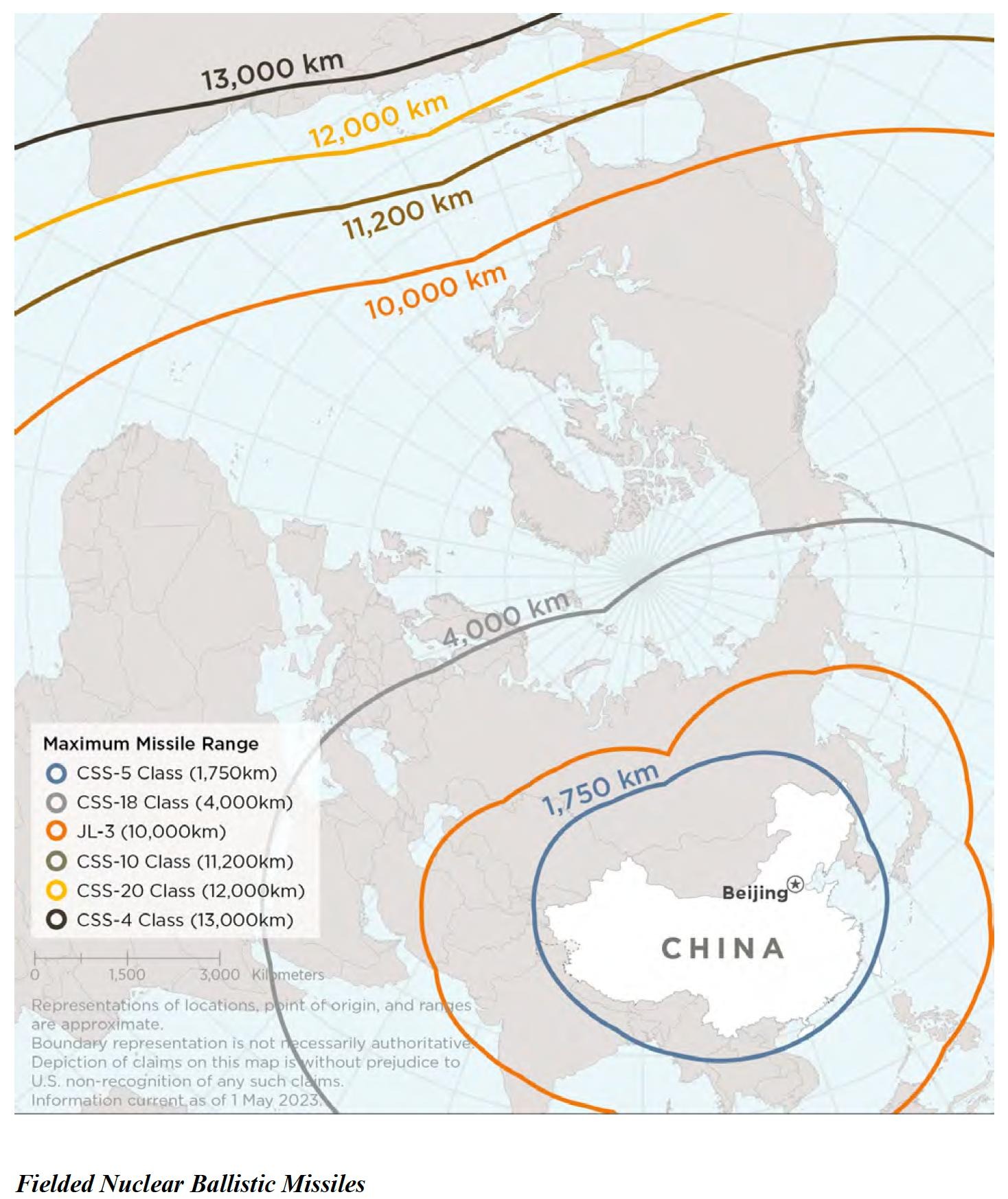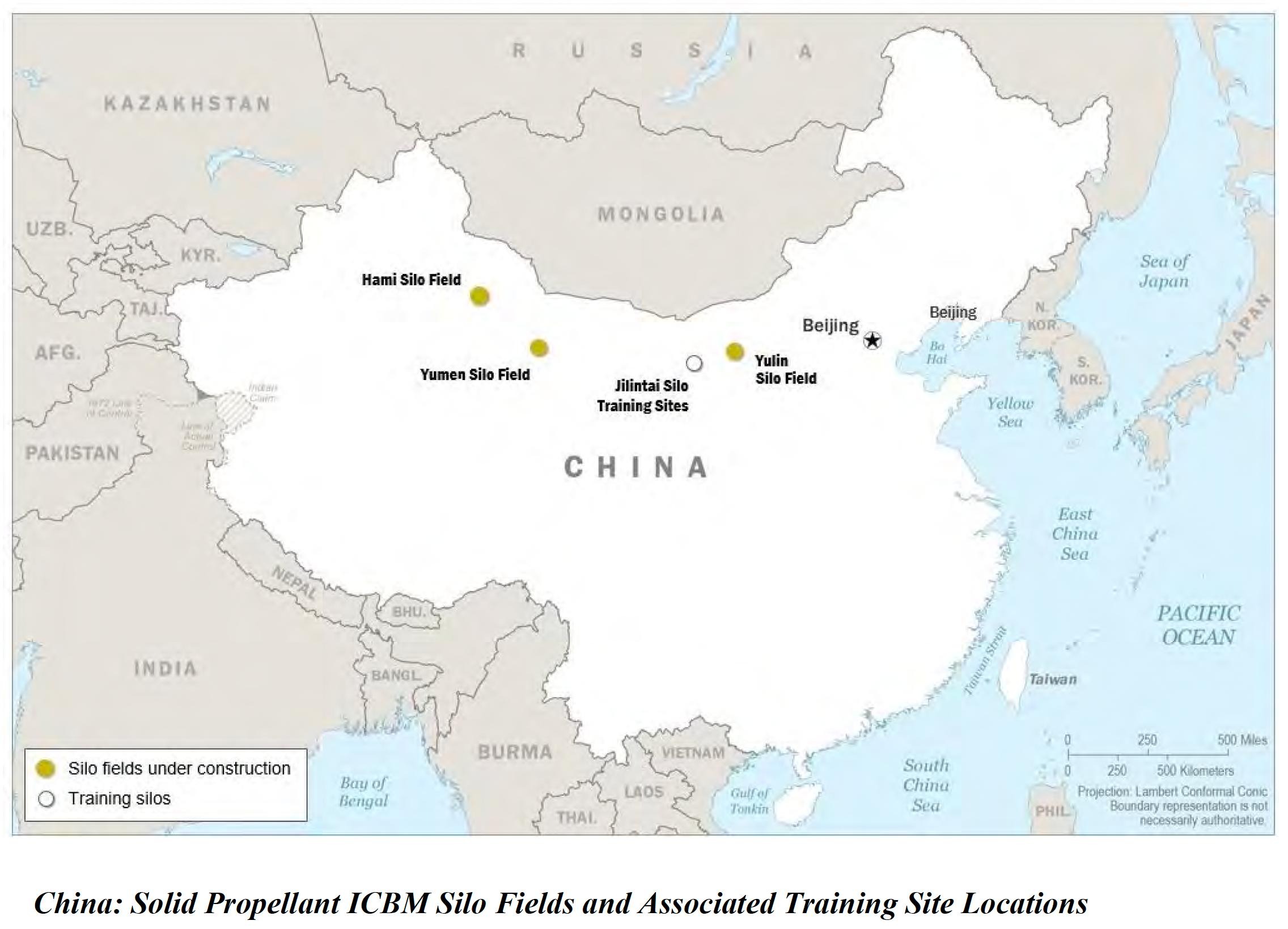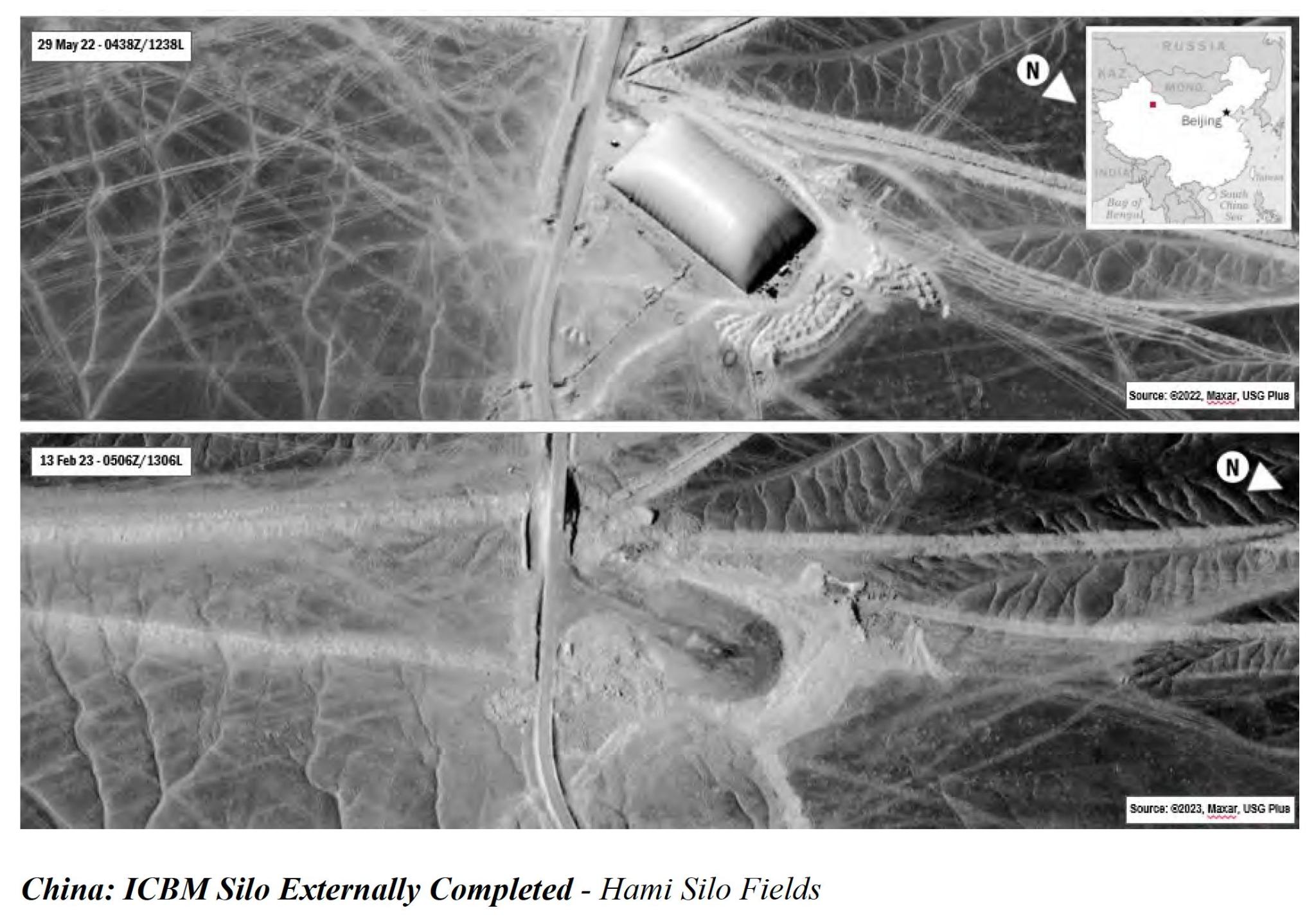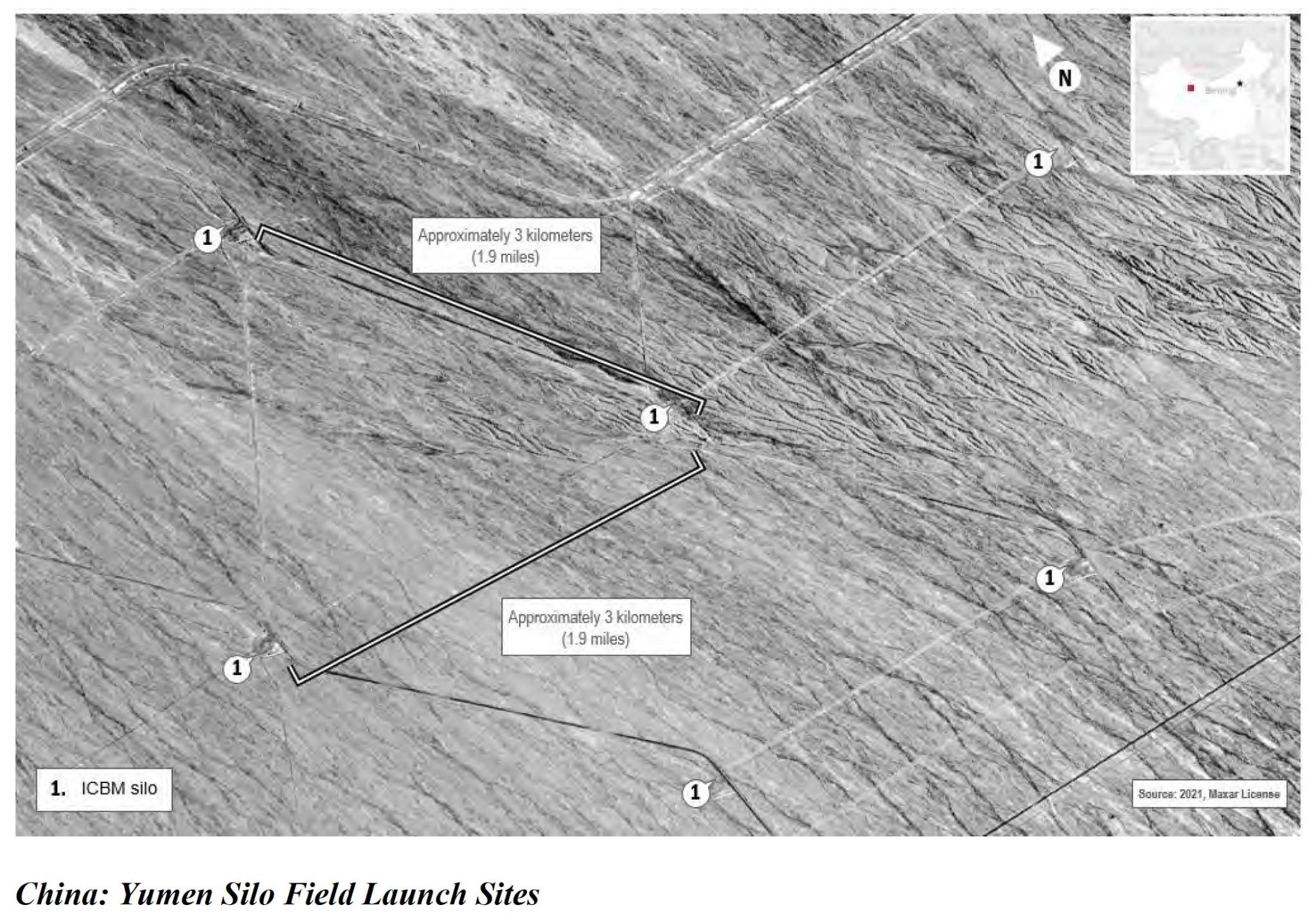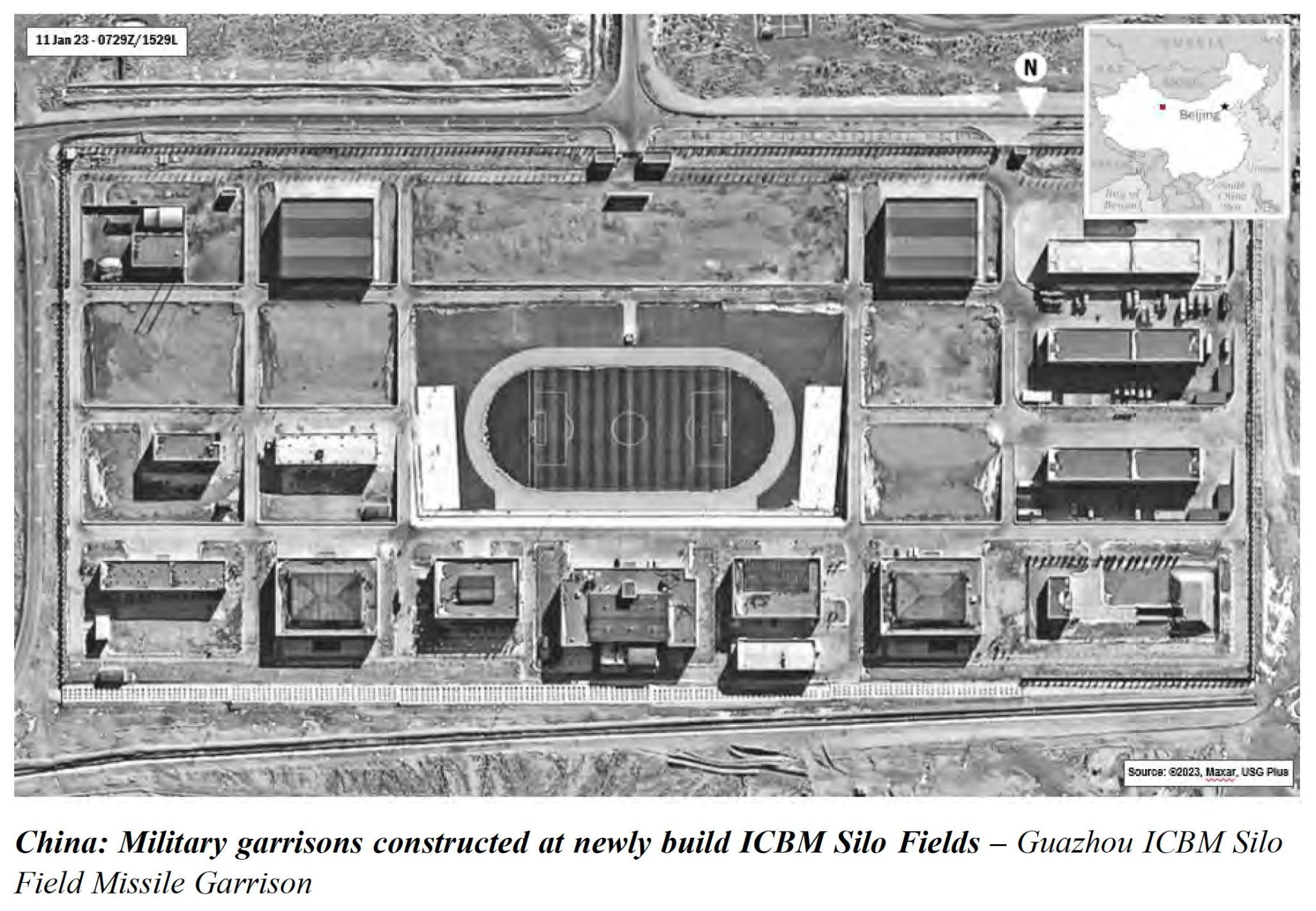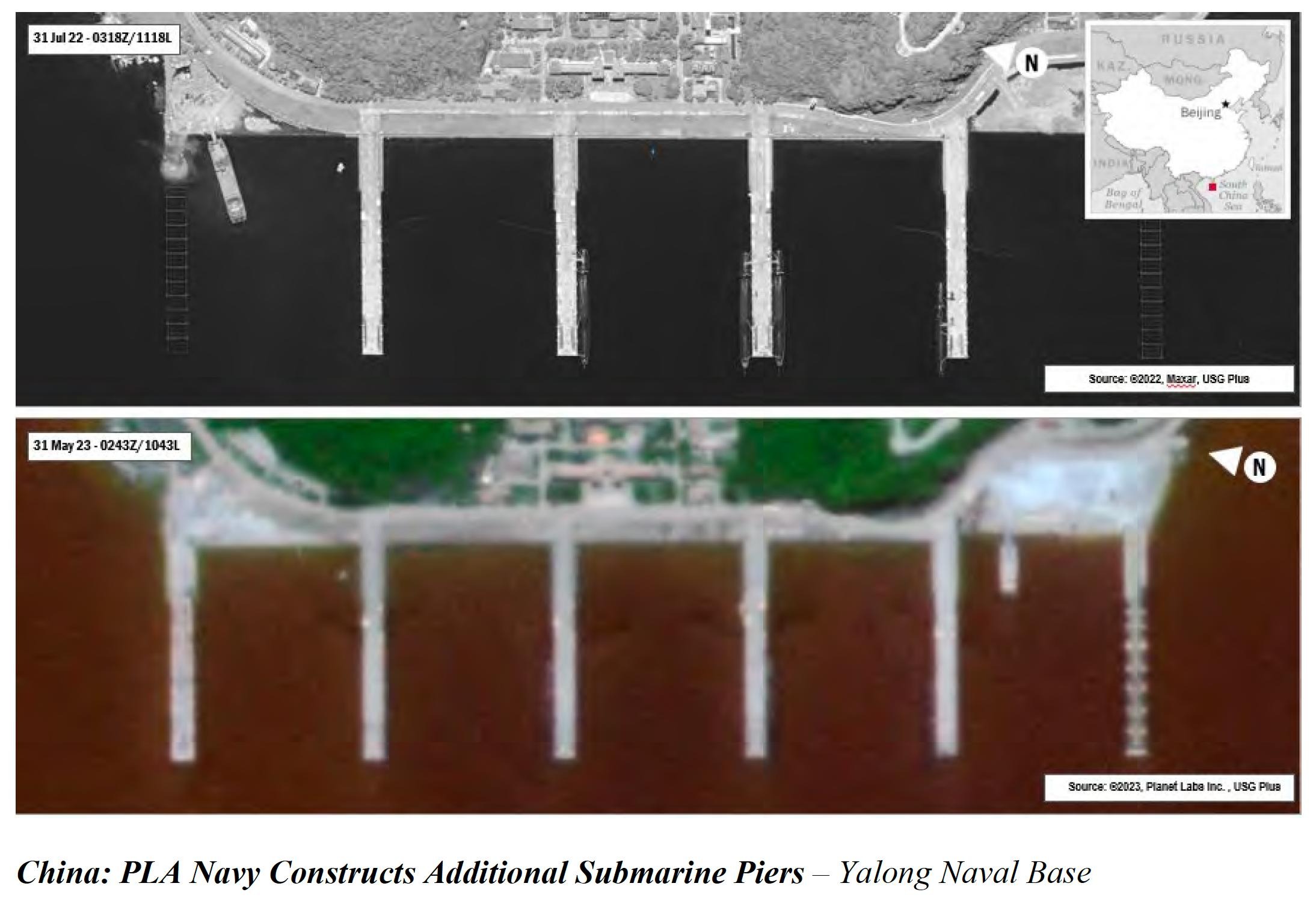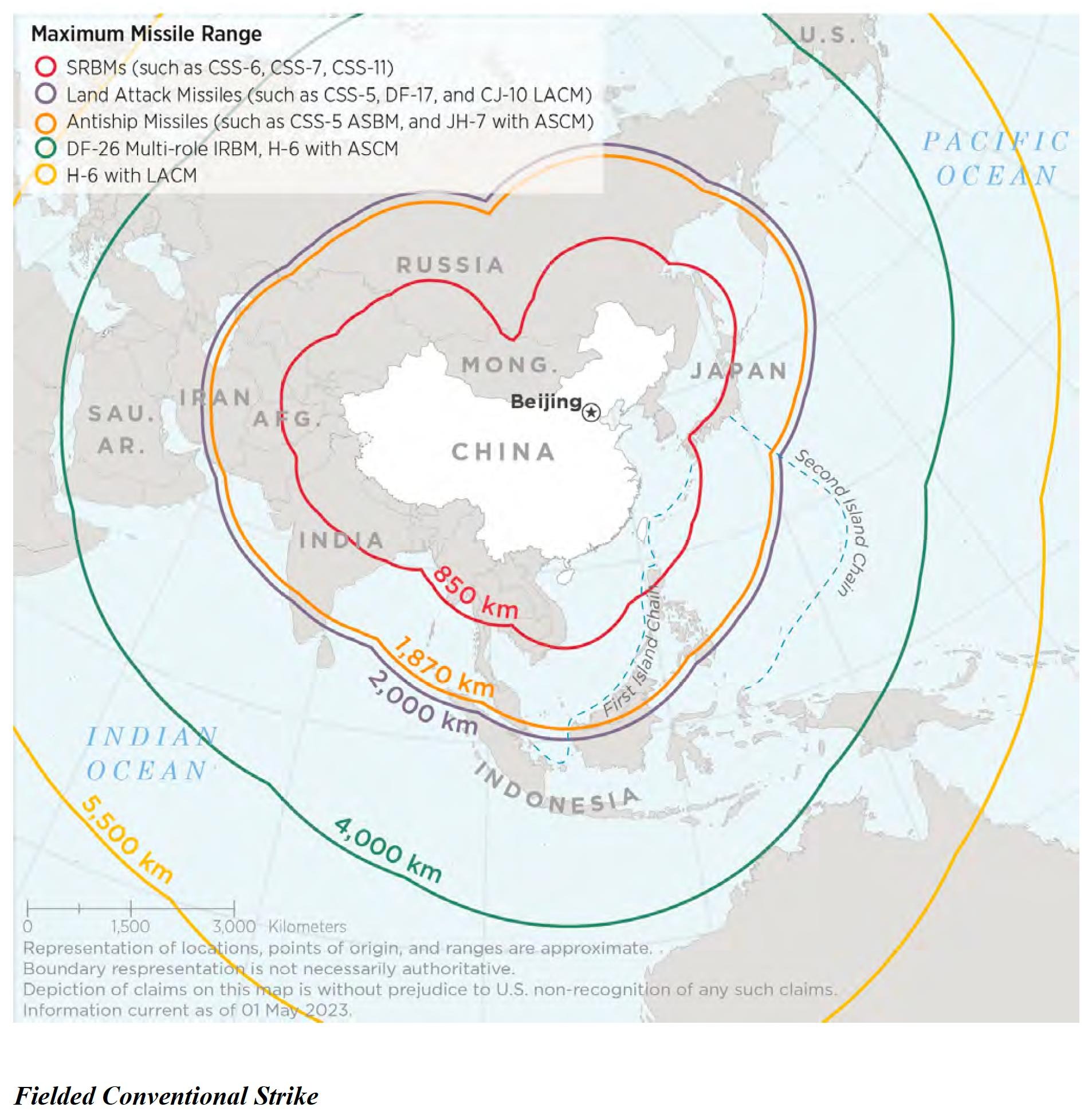Reaping the Whirlwind: How China’s Coercive Annexation of Taiwan Could Trigger Nuclear Proliferation in Asia and Beyond
Gabriel B. Collins and Andrew S. Erickson, Reaping the Whirlwind: How China’s Coercive Annexation of Taiwan Could Trigger Nuclear Proliferation in Asia and Beyond (Houston, TX: Baker Institute for Public Policy, Rice University, 25 October 2023).
CLICK HERE TO DOWNLOAD FULL-TEXT PDF.
Five years ago — and certainly a decade ago — coercive annexation of Taiwan by the People’s Republic of China (PRC) might have seemed an extreme scenario. Unfortunately, this is no longer the case. The rising crescendo of PRC air and maritime pressure operations near the island, missile firings, and so on are bringing Beijing within a few steps of the maritime quarantine or similar operations that would likely be central to an attempt at coercive annexation.
Meanwhile, China’s meteoric military buildup across the board gravely threatens other nations. Backstopping it all is a major nuclear weapons ramp-up, the latest elements of which are detailed here to the very cutting-edge of public information, much of it from the Pentagon’s just-released 2023 “China Military Power Report”.[1] Based on this information, we conclude that if the PRC succeeded in coercively annexing Taiwan, repercussions could include nuclear proliferation with regional — and even global — security consequences.
Even under a baseline scenario, a nuclear proliferation cascade following a PRC-coerced annexation of Taiwan could see hundreds of nuclear warheads added to stockpiles globally. More dire cases — for example, in which Japan and/or South Korea nuclearized extensively, China responded, and the U.S. and Russia then each expanded their nuclear forces — could trigger a chain of proliferation that ultimately adds a thousand or more warheads to nuclear stockpiles globally. The addition of such warhead numbers, plus the entry of new nuclear powers with no nuclear command, control, or operations experience in the midst of a tense geopolitical environment, would be a recipe for instability. The risks that could result if these nuclear proliferation whirlwinds are unleashed should drive the U.S. to redouble its efforts to ensure that this Pandora’s box is never opened. … …
[SECTION BELOW OFFERS KEY DATA FROM NEW 2023 PENTAGON CHINA MILITARY POWER REPORT:]
Key Motivator: Growing Security Dilemma for China’s Neighbors
Proximity to the PRC is generating mounting insecurity, particularly for nations that suffer pressure from Beijing now — and may suffer still worse in the future. China’s meteoric military buildup is rapidly adding an extraordinary number of weapons and weapons-delivery platforms across all domains, creating severe, and continually growing, security challenges for its neighbors and other nations. These nations are therefore reviewing and potentially reconsidering how best to ensure their own security.
Beijing already commands the world’s largest ground forces, navy and other maritime forces,[8]and overall missile forces, as well as the region’s largest military aviation forces. Under the auspices of the PLA Air Force (PLAAF), China also has one of the world’s biggest and most sophisticated surface-to-air missile forces.[9] Perhaps of greatest concern for the United States and China’s neighbors alike, Beijing has the world’s largest arsenal of conventional ballistic and cruise missiles, controlled primarily by the PLA Rocket Force (PLARF). Table 1 tabulates the tremendous number and variety of missile systems already deployed by the PLARF.
Table 1 — PLARF Missile Systems Currently Fielded by China
Nuclear weapons policy is the sole preserve of China’s paramount leader. Here Xi is making his mark with a major ramp-up that departs greatly from his predecessors’ relative quantitative restraint regarding the production and deployment of nuclear weapons. A decade in to Xi’s time in charge, China already has a rapidly-growing nuclear triad, second only to that of Russia and the United States, at over 500 operational nuclear warheads by May 2023,[10] and “approximately 350 ICBMs [intercontinental ballistic missiles] in its arsenal, all of which can reach CONUS [the continental United States].”[11] This trajectory offers a path to some form of overall China-Russia-U.S. parity with over 1,000 warheads projected by 2023 and 1,500 by 2035.[12] Much of the more than 1,000 PRC nuclear warheads the Pentagon anticipates by 2030 “will be deployed at higher readiness levels,”[13] and “most will be fielded on systems capable of ranging the CONUS.”[14]
Following its own repeated public underestimates, the Pentagon emphasizes, “These changes to the numbers, capability, and readiness of the PRC’s nuclear forces in the coming years are likely to outpace potential developments by the force of any competitor.”[15] Figure 1 depicts the respective range rings of PRC nuclear ballistic missiles that are already operational.
Figure 1 — Nuclear Ballistic Missiles Fielded by China
Such a rapid upsurge was unforeseen even by the Defense Department: “Compared to the PLA’s nuclear modernization efforts a decade ago, current efforts dwarf previous attempts in both scale and complexity.”[16] “Over the next decade, the PRC probably will continue to pursue selective qualitative parity with an increasing scope of U.S. and Russian capabilities,” the Pentagon projects. “The PLA seeks a diverse nuclear force, comprised of systems ranging from low-yield precision strike missiles to ICBMs with multi-megaton yields.”[17]
It appears the PRC’s goal is to have capabilities available at every rung of the potential escalation ladder to convince potential adversaries that Beijing can meet and overcome them in any scenario.
As part of the low-end of this “all-level” effort, China has reportedly developed “a lower-yield weapon … for use against campaign and tactical targets that would reduce collateral damage.”[18] Potential related applications include “controlled use of nuclear weapons, in the warzone, for warning and deterrence.” The Pentagon judges that China’s DF-26 intermediate-range ballistic missile (IRBM) “is the PRC’s first nuclear-capable missile system that can conduct precision strikes, and therefore, is the most likely weapon system to field a lower-yield warhead in the near term.”[19]
To operationalize this ambitious approach, China under Xi is engaged in a gargantuan campaign of nuclear weapons development and deployment across the board. In 2022, China likely completed construction of three new solid-propellant silo fields, with 300+ new silos that can accept either DF-31 or DF-41 ICBMs — at least some already loaded.[20] For multi-megaton warhead delivery utilizing liquid fuel,[21] China is fielding a new DF-5C silo-based ICBM. It is likely “developing an upgrade to” its existing DF-5 ICBMs with multiple independently targetable reentry vehicles (MIRVs). As part of these efforts, “The PRC is building more silos for DF-5 class ICBMs; increasing the number of brigades while simultaneously increasing the number of launchers per brigade.”[22] Figures 2-5 plot and depict China’s new solid-propellant ICBM silo fields and the training sites associated with them.
Figure 2 — PRC Solid Propellant ICBM Silo Fields and Associated Training Site Locations
Figure 3 — ICBM Silo Externally Completed: Hami Silo Fields
Figure 4 — Yumen Silo Field Launch Sites
Figure 5 — Example of Military Garrisons Constructed at Newly Built ICBM Silo Fields: Guanzhou ICBM Silo Field Missile Garrison
Regarding solid-fueled, road-mobile ICBMs, China “is establishing additional nuclear units and increasing the number of launchers in mobile ICBM units.”[23] The DF-41 “has improved range and accuracy” and as many as “three warheads per missile.”[24]
Xi has tasked the PLA Navy (PLAN) to “accelerate its sea-based nuclear capability,”[25]including through his “2018 directive for the SSBN [nuclear-powered ballistic missile submarine] force to achieve ‘stronger growth.’”[26] China already has a portion of its six operational Type 094 Jin-class SSBNs conducting “near-continuous at-sea deterrence patrols,” outfitted with a combination of JL-2 and JL-3 submarine-launched ballistic missiles (SLBMs). JL-3 SLBMs can range the continental United States (CONUS) from PRC littoral bastions (e.g., in the South China Sea and potentially the Bohai Gulf). China continues to build additional Type 094 SSBNs, and in the “early 2020s,” will likely start construction of an improved Type 096 SSBN “probably intended to field MIRVed SLBMs.”[27] Figure 6 depicts the addition of submarine piers at China’s SSBN base on Hainan Island in the South China Sea.
Figure 6 — PLA Navy Constructs Additional Submarine Piers at Yalong Naval Base
China is finally initiating the third leg of its modern nuclear triad with the “operationally fielded” H-6N bomber. This long-range airframe has an “air-to-air refueling probe” and uses “recessed fuselage modifications” to carry a nuclear-capable air-launched ballistic missile (ALBM) externally.[28] “The ALBM carried by the H-6N appears to be armed with a maneuvering reentry vehicle, indicating that the ALBM, along with the DF-26 IRBM, is likely capable of conducting nuclear precision strikes against targets in the Indo-Pacific theater.”[29] Additionally, there’s a high likelihood that China is “developing a strategic stealth bomber.”[30]
As part of an effort to extend advanced nuclear weapons delivery options and circumvent American missile defenses, it’s also probable that China is developing “a strategic hypersonic glide vehicle and FOB [Fractional Orbital Bombardment] system.” On July 27, 2021, Beijing “conducted a 40,000-km hypersonic glide vehicle test” that “likely demonstrated the PRC’s technical ability to field a FOB system.”[31] Importantly, the Soviet Union abandoned efforts to develop FOBs in part because of their extremely escalatory nature, which might incentivize preemptive strike.[32]
China is underwriting its dramatic nuclear force expansion with commensurate research, development, production, and reprocessing facilities expansion, as well as potential unacknowledged future testing. Russia is literally helping to fuel this effort, providing highly-enriched uranium (HEU) for China’s two CFR-600 “national defense investment project” fast breeder reactors on Changbiao Island in Xiapu County, Fujian province.[33] The Pentagon judges that China’s dual CFR-600 reactors will “probably” generate weapons-grade plutonium for nuclear weapons,[34] and that each can produce “enough plutonium for dozens of nuclear warheads annually.”[35] Sino-Russian cooperation in this regard is highly significant and concerning:
“By December 2022, Russia delivered the first three batches of HEU nuclear fuel assemblies, to China for the first core loading and the first refueling of the CFR-600. In early 2023, think-tank reporting indicates the quantity of HEU transferred from Russia to China for its CFR-600 reactors is more than the entire amount of HEU removed worldwide under the U.S. and International Atomic Energy Agency (IAEA) auspices in the last three decades. In March 2023, the PRC and Russia signed an agreement that includes commitments for continued cooperation on fast reactor and reprocessing technology development, extending this relationship for ‘the decades ahead.’”[36] [Emphasis added.]
For weapons-grade plutonium extraction, China may utilize reprocessing Plant 404 at the Jiuquan nuclear complex in Gansu province[37] (50 ton/year capacity); and/or, through their coming online by 2025, the dual plants being built at China National Nuclear Corporation (CNNC)’s Gansu Nuclear Technology Park in Jinta, several tens of kilometers southeast of Plant 404.[38] China also endeavors “to expand and diversify its capacity to produce tritium.”[39]Moreover, China’s “possible preparation to operate its Lop Nur nuclear test site year-round and lack of transparency on its nuclear activities have raised concerns regarding its adherence to the U.S. ‘zero yield’ standard adhered to by the United States, the United Kingdom, and France in their respective nuclear testing moratoria.”[40]
Beijing is taking this ambitious approach despite declaring support for a Fissile Material Cutoff Treaty, which it is simultaneously undermining at the Conference on Disarmament as part of the typical PRC “say-do” gap concerning arms control that resists self-restriction while attempting to impose restrictions on others.[41] Beijing has also “refused international calls to apply” International Atomic Energy Agency (IAEA) safeguards, “under a Voluntary Offer Agreement on its civilian reactors,” to the abovementioned reprocessing plants.[42]
Beijing’s nuclear strategy, redlines, and limits remain highly uncertain: China is developing its forces rapidly while offering neither substantial transparency nor dialogue, to say nothing of confidence-building measures, let alone binding arms control agreements of the sort that Washington and Moscow concluded successfully in later Cold War years. Beijing officially maintains a strict No First Use (NFU) policy, but it seems unlikely that it could be relied upon in the event of foreign strikes that threatened PRC command and control (C2) nodes or major strategic effects, or in the event that the Party and its Army faced failure in a Taiwan conflict.[43]
Risks of confusion, misperception, and escalation are all heightened by PRC comingling of nuclear and conventional missiles, or the “dispersal of mobile missile systems to hide sites” whereby it may be unclear which type of system is where at a given time.[44] As part of this risk-raising approach, China “may be exploring development of conventionally-armed intercontinental range missile systems. … Such capabilities would allow the PRC to threaten conventional strikes against targets in the continental United States, Hawaii, and Alaska. Conventionally-armed ICBMs would present significant risks to strategic stability.”[45] Figure 7 depicts the respective range rings of PRC conventional strike systems (i.e., missiles, some of which are aircraft-delivered, thereby extending their range) that are already operational.
Figure 7 — Conventional Strike Weapons Systems Fielded by China
Beijing has nevertheless “refused to join the Hague Code of Conduct or participate in other confidence-building measures designed to reduce the risk of accidental nuclear war.”[46] And, continuing an established pattern, in 2022 “the PRC rejected requests by the United States to discuss strategic stability or strategic risk reduction, and other aspects of the PRC’s rapid nuclear buildup.”[47]
Heightened readiness enables China to operationalize its swiftly shifting nuclear posture from “minimum deterrence” in rhetoric, to upper bands of “limited deterrence” in practice[48] — but this amplifies the risk. Whereas most if not all PRC nuclear forces were previously maintained in “peacetime status with separated launchers, missiles, and warheads,” the PLARF now maintains an increasing portion of its forces on “combat readiness duty” and “high alert duty” — “which includes assigning a missile battalion to be ready to rapidly launch.”[49] Furthermore, at least part of PLARF nuclear forces, including the new silo-based ICBMs entering the PLARF, “will probably be operating under China’s developing ‘Early Warning Counterstrike’ (预警反击) posture (the PLA term for Launch On Warning, or LOW), enabling a rapid responsive nuclear strike”[50] “before an enemy first strike can detonate.”[51] To enable a LOW posture, China has developed ground- and space-based sensors, and trained accordingly. “As of 2022, the PRC likely has at least three early warning satellites in orbit,” the Defense Department asserts.[52] In yet another area of growing Russo-Chinese cooperation, Putin declared in 2019 “that Russia is aiding the PRC in developing a ballistic missile early warning system.”[53]
Even without factoring in China’s increasingly bellicose statements and aggressive actions under Xi, the sheer size, scope, and trajectory of its military ramp-up leads neighbors such as Japan and South Korea to question their security from both PRC conventional and nuclear threats, and how both they themselves and their alliances with the United States can deter PRC coercion and defend against it as necessary. As the military balance continues to worsen and the PRC builds nuclear capabilities that may enhance its ability to cast doubt on the viability of America’s nuclear umbrella in Asia, decision-makers in Tokyo, Seoul, and beyond will seek further assurance that America can reliably provide extended deterrence. Should they develop sufficient doubts concerning the adequacy of the guarantees Washington offers, or their likely reliability in practice (the latter of which would certainly come under question if the PRC coercively annexed Taiwan), then they might be motivated to consider options that were previously rejected outright or shelved given the potential difficulty and downsides. … …. …



